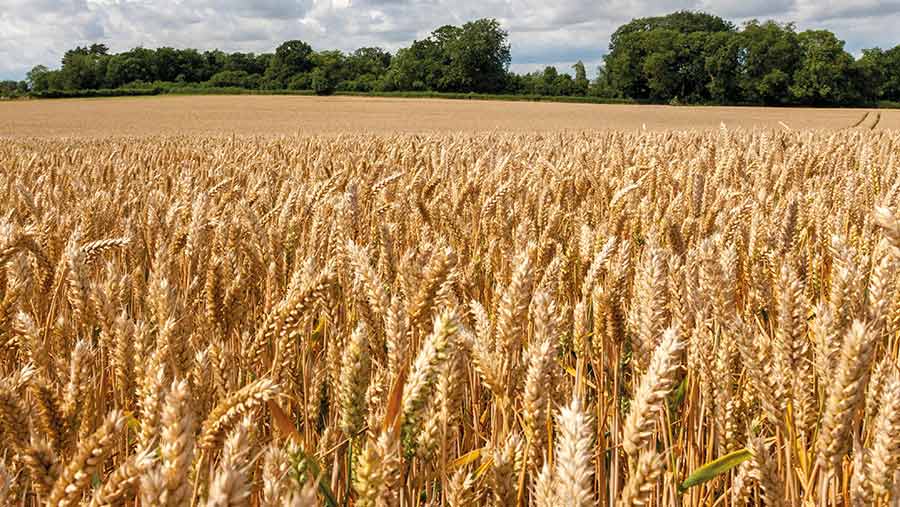Wheat market pressured by better global harvest prospects
 © Tim Scrivener
© Tim Scrivener Wheat prices have come under pressure as a result of improved weather, leading to better global harvest outlooks.
However, there is the potential for them to bounce back in a market that continues to be nervous and volatile.
In the week to Wednesday 29 June, new-crop prices fell by about £10/t to give an ex-farm range of £255-£274/t for August, with the highest prices in the North East, the Borders and the North West.
Futures prices had fallen by about £20/t last week, but have since recovered some of the lost ground to put the November 2022 contract at £285/t midweek.
See also: Business Clinic – why are profits up but overdraft is higher?
The recent high prices have dampened demand for wheat, with some customers turning to maize, which has been cheaper.
While the weather has taken some of the uncertainty out of the market, traders continue to warn of extreme volatility.
Most are sceptical about the prospects of a humanitarian corridor being organised to get grain out of Black Sea ports. Even if a deal were to be brokered, insurers are thought unlikely to be keen to cover vessels.
While there have been some bullish numbers put on the size of the Ukrainian harvest, there are huge questions about storage capacity and harvest logistics.
Simon Wilcox, Cefetra UK farm grain origination manager, said: “A fair amount of weather risk has come out of the market – we are about £80 below the top now.”
Cashflow demands
He expects farm cashflow demands will lead to pressure to sell at harvest, with resulting price pressure. Export demand in the next few months could relieve it somewhat, but some merchants will be reluctant to tie up working capital in stored grain at these high values, he suggested.
“We could see grain discounted more heavily than usual in the first half of the [grain] year – the dynamics and the way the market operates could change,” said Mr Wilcox.
A further consideration was the high initial margin cost and subsequent margin calls on futures trades – some buyers would choose to do back-to-back trades rather than using futures to hedge their risk.
Andrew Hill, Frontier grain origination team leader, said last week’s dip in price brought out some farmer sellers, but it was now a waiting game until we see some combines roll. “French crops seem to be coming off OK, and all crops here look pretty well,” he said.
“I think farmer cashflow will be the driver for selling – if yields are good, we’ll see some of that come forward. Overall, farmers are generally more sold on wheat than they have been for the past two years.”
Grain market factors
- The US winter wheat harvest is progressing faster than the five-year average, but demand is relatively low.
- Improved European harvest prospects
- Russia is forecast to produce a record 89.2m tonnes of wheat, compared with 76m tonnes last year
- Ukrainian 2022 wheat crop is forecast at 18.2m tonnes (32.2m tonnes in 2021) and maize at 27.7m tonnes (42.1m tonnes in 2021)
- The International Grains Council has forecast global 2022-23 wheat and coarse grain production at 2,255m tonnes, compared with 2,290m tonnes in 2021-22, and end-of-season stocks at 583m (607m tonnes in 2021-22)
- There is uncertainty about the size of India’s wheat crop – forecasts range between 81m tonnes and 106m tonnes. It will need to import wheat if the crop turns out at the lower end of this range
